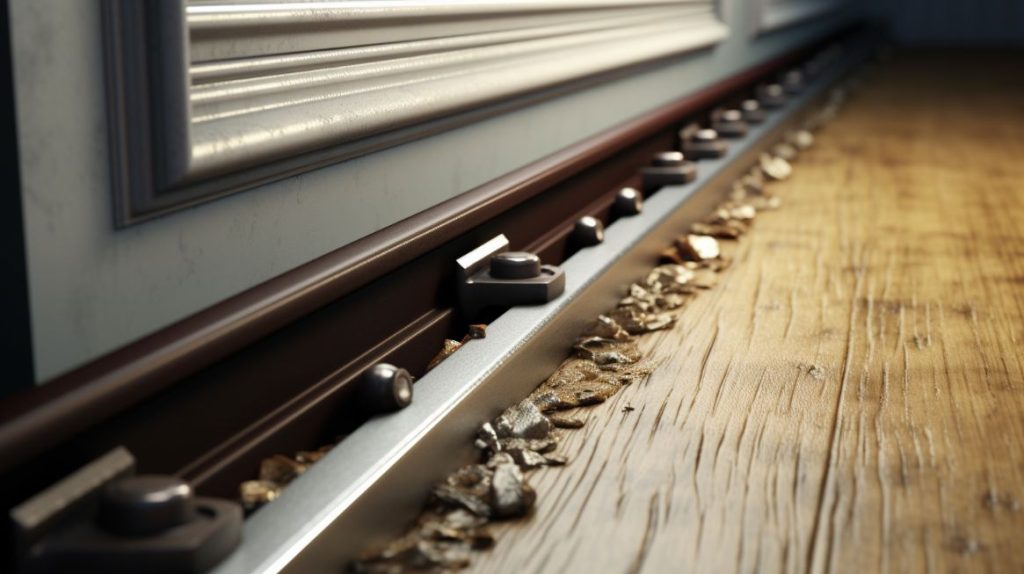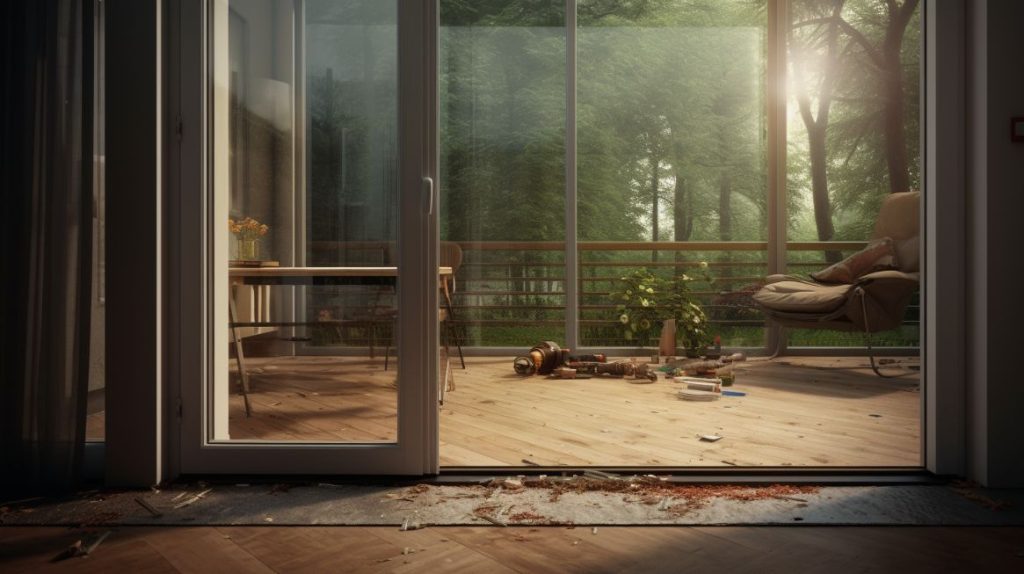

A sliding door stuck on its track can be a major pain point, frustrating homeowners and disrupting daily routines. This thorough guide will walk you through various methods to fix a stuck sliding door, offering clear solutions and expert advice. We’ll tackle common causes and offer actionable steps, ensuring a smooth and effortless glide for your sliding doors once again. This article will explain why your sliding door might be stuck, the varied approaches to troubleshooting, and, most crucially, how to restore its smooth operation. The article will be structured in sections including troubleshooting common issues, addressing track alignment, and the function of lubrication. This guide will empower you to address the issue.
determineing the Cause of a Stuck Sliding Door
Understanding why your sliding door is stuck is crucial before attempting any repairs. Common causes include debris accumulation in the track, worn-out rollers or wheels, misaligned tracks, or insufficient lubrication. Often, a simple cleaning or lubrication job can solve the problem. Let’s explore these scenarios in more detail:
Debris Accumulation
Dirt, leaves, and other debris can easily accumulate in the track, interfering with the smooth operation of your sliding door. Over time, this buildup can cause the door to jam, becoming unresponsive to movement or even completely stuck. This accumulation can significantly affect the door’s gliding mechanics, preventing it from sliding smoothly. This is the most common issue and can often be fixed by simply clearing the debris. Examples include small pieces of stones, twigs, or construction debris.
Related Post : Front Door Not Closing Flush? Causes and How to Realign It
Worn-Out Rollers or Wheels
The rollers or wheels that support the door’s movement can become worn down or damaged over time. These components often need replacement and should be inspected for cracks, dents, or excessive wear. This will ensure smooth movement, and will be an issue if the rollers are worn or damaged.
Misaligned Tracks
Misaligned tracks can also contribute to a sliding door getting stuck. The tracks may need to be adjusted, or even replaced, to ensure proper alignment and the smooth flow. If you suspect this is the case, it’s essential to check for any visible misalignment. An experienced professional can determine if the entire track needs to be adjusted or replaced, or if the misalignment can be corrected.
Insufficient Lubrication
Insufficient lubrication on the rollers, tracks, and other moving components can lead to friction, slowing down the door’s operation and ultimately causing it to get stuck. This is a significant facet, since lubrication can ensure smooth gliding.
Cleaning and Removing Debris from the Track
The first and often easiest step in fixing a stuck sliding door is to clean the track and remove any debris that may be preventing smooth movement. This simple task may seem insignificant, but it is a core component of the process.
Clearing the Track
Use a brush, vacuum, or a specialized tool to thoroughly remove any debris that may have accumulated in the track. Be cautious not to damage the track or surrounding structures. Start at one end of the track and work your way to the other, paying attention to all parts of the track. If there’s a lot of debris, a gentle water spray might be needed to dislodge it before brushing or vacuuming.
Lubricating the Rollers
Applying lubrication to the rollers and the tracks can restore the gliding ability of the door. Use a lubricant specifically designed for sliding doors; this will greatly reduce the friction between the rollers and the tracks. Apply a small amount of lubricant to the rollers to ensure they are not excessively lubricated, as it can lead to accumulation or staining.
Checking Track Alignment
Once you’ve cleaned out the debris, carefully check for any misalignment in the tracks. A slight adjustment may be needed or even replacement might be necessary. A simple adjustment may be sufficient for this task. Professional help might be needed for extensive track repairs or adjustments.
Adjusting the Door Track for Proper Alignment
In some cases, the tracks may be slightly off, preventing the door from sliding smoothly. Adjusting the tracks is essential to ensure the smooth gliding of the door.
determineing the Misalignment
Examine the tracks for any signs of misalignment, such as gaps or unevenness. The key is to determine the area where the misalignment is occurring. Note any visual irregularities or gaps along the length of the tracks. This is the first step in making adjustments.
Using Tools for Adjustments
Using appropriate tools, such as a screwdriver or pliers, carefully adjust the track until it’s flush with the door. Be meticulous in these adjustments, as uneven adjustment can lead to further problems in the future. If the adjustment is problematic, consider calling a professional handyman.
Checking for Damage or Worn-Out Components
Inspect the tracks for any signs of damage, such as dents or cracks. If necessary, the entire track might need to be replaced. If there’s significant damage or wear, a professional sliding door repair service should be contacted for a complete evaluation.
Replacing Worn-Out Rollers or Wheels
Sometimes, the rollers or wheels responsible for the door’s gliding motion can wear out over time. Replacing them is often a straightforward process.
determineing Worn-Out Components
Look for signs of wear or damage on the rollers or wheels. These components are crucial for smooth operation and any cracks, damage or substantial wear indicates they need to be replaced.
selecting the Right Replacement Parts
Ensure you select rollers or wheels that are compatible with your door model. Check your door or frame information to ascertain the correct rollers. A professional should be consulted for replacement parts if you’re uncertain about the right ones.
Installing the New Parts
Carefully remove the old rollers or wheels and install the new ones according to the manufacturer’s instructions. This is crucial to ensure the proper positioning and movement of the door. It’s also crucial to install the new parts correctly.
Seeking Professional Help
If you’ve tried the above steps and your sliding door still won’t move, consider seeking professional assistance. A qualified handyman or sliding door specialist can determine and address the root cause of the issue effectively and proficiently.
Determining the Scope of the Problem
A professional can quickly assess the situation to determine the scope of the problem, allowing for a more efficient repair process. This may include assessing the wear, alignment and structural issues.
Professional Expertise and Tools
Professional handymen often possess the specialized tools and expertise to diagnose and fix complex problems. This includes the use of advanced tools or specific knowledge that may be needed.
Cost Considerations
In some cases, professional help may be warranted due to the cost or complexity of repairs. There may be specific cases where the cost of repairs is significant.
In conclusion, a sliding door stuck on its track is a common frustration, but with a little know-how and the right tools, you can often restore smooth movement yourself. Remember to determine the root cause, address potential issues like debris or lubrication problems, and consider professional help if needed. This thorough guide has offerd you with actionable steps to tackle this issue confidently. Ready to get your sliding door gliding again? Contact a professional handyman or repair service if you need extra support.